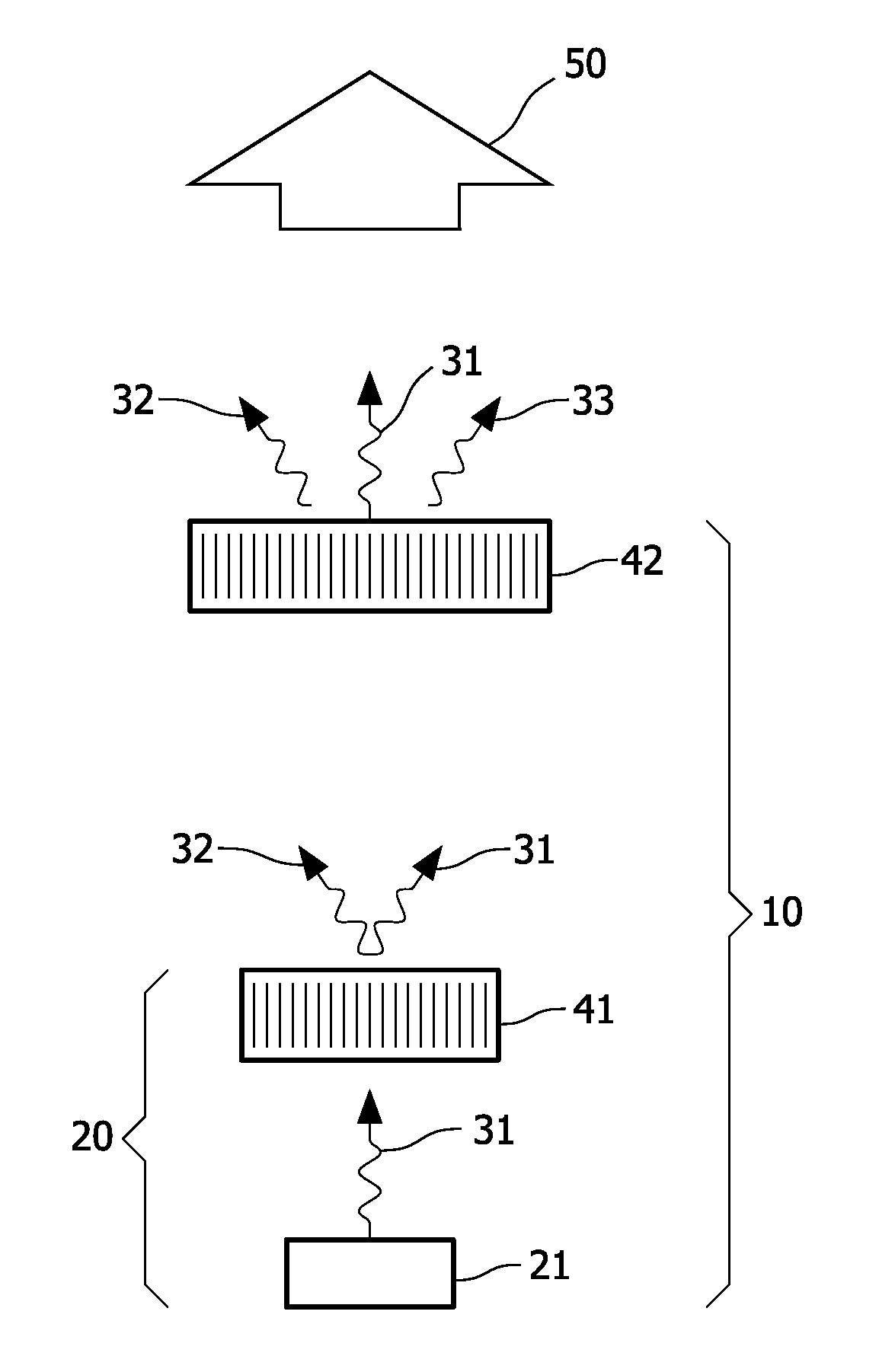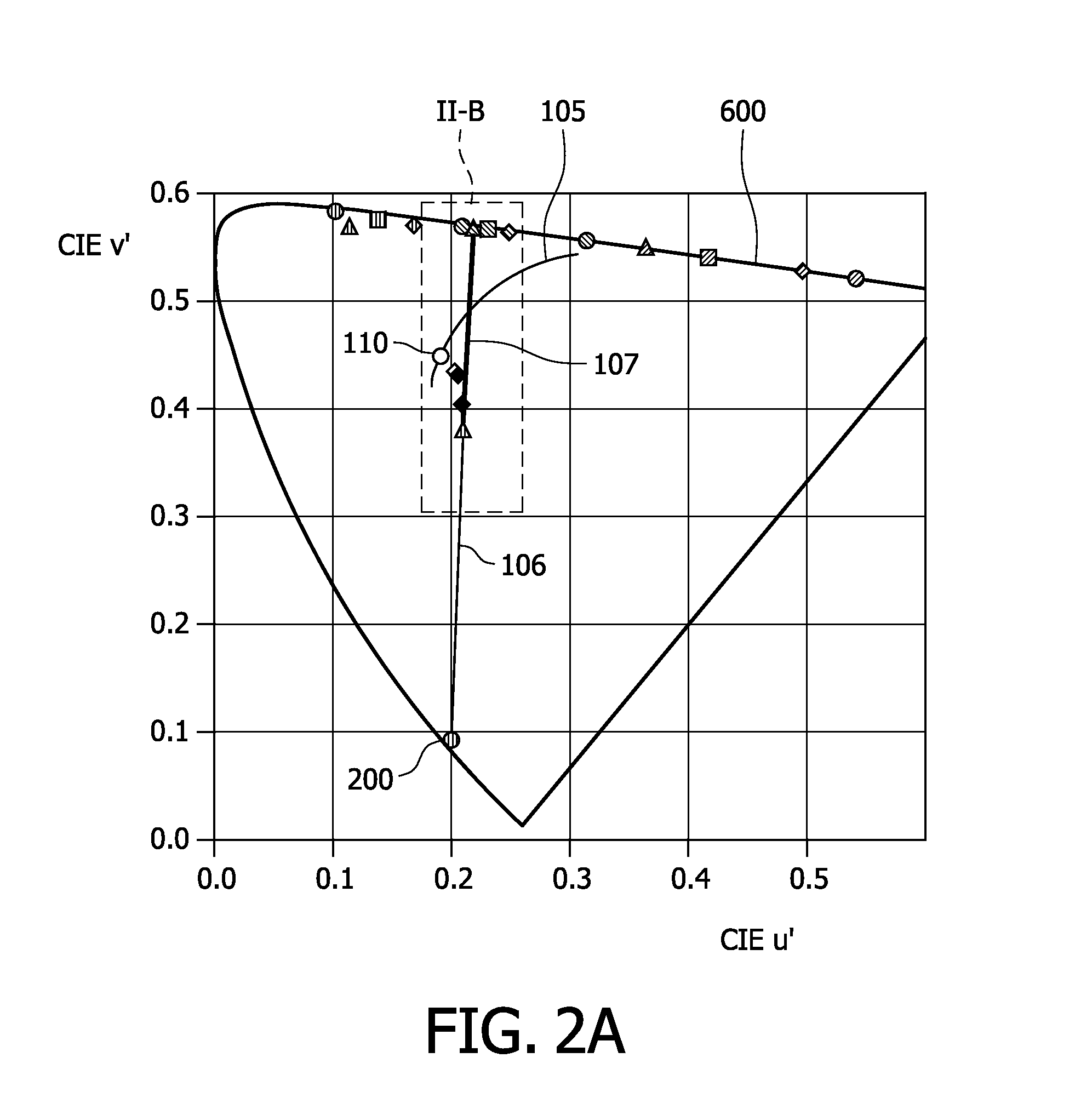Illumination system
a technology of illumination system and illumination system, which is applied in the direction of instruments, non-linear optics, lighting and heating apparatus, etc., can solve the problems of insufficient output light requirements of available light-emitting devices, inconvenient operation, and insufficient light output of illumination system, so as to achieve uniform intensity and color output
- Summary
- Abstract
- Description
- Claims
- Application Information
AI Technical Summary
Benefits of technology
Problems solved by technology
Method used
Image
Examples
Embodiment Construction
[0056]FIG. 1 shows a schematic cross-sectional view of illumination system 10 according to the invention. The illumination system 10 comprises a semiconductor light-emitting device 20 which emits Blue light 31 in the direction of a first phosphor layer 41. Typically, it is the chip or die 21 of the light-emitting device 20 which emits the light. The first phosphor layer 41, which forms part of the semiconductor light-emitting device 20 and is thus physically very close to the source of Blue light, is arranged to intercept at least some of the Blue light, and the phosphor material is selected to absorb the Blue light 31 and to emit a first Yellow light 32 due to the excitation by the Blue light 31. Due to its proximity to the Blue light source, the first phosphor layer 41 may be referred to as a “local” phosphor layer.
[0057]Phosphor materials suitable for use in the first phosphor layer 41 include garnet phosphors. Garnet phosphors have the following general formula:
(Y1-x-y-a-bLUxGdy...
PUM
 Login to View More
Login to View More Abstract
Description
Claims
Application Information
 Login to View More
Login to View More - R&D
- Intellectual Property
- Life Sciences
- Materials
- Tech Scout
- Unparalleled Data Quality
- Higher Quality Content
- 60% Fewer Hallucinations
Browse by: Latest US Patents, China's latest patents, Technical Efficacy Thesaurus, Application Domain, Technology Topic, Popular Technical Reports.
© 2025 PatSnap. All rights reserved.Legal|Privacy policy|Modern Slavery Act Transparency Statement|Sitemap|About US| Contact US: help@patsnap.com



